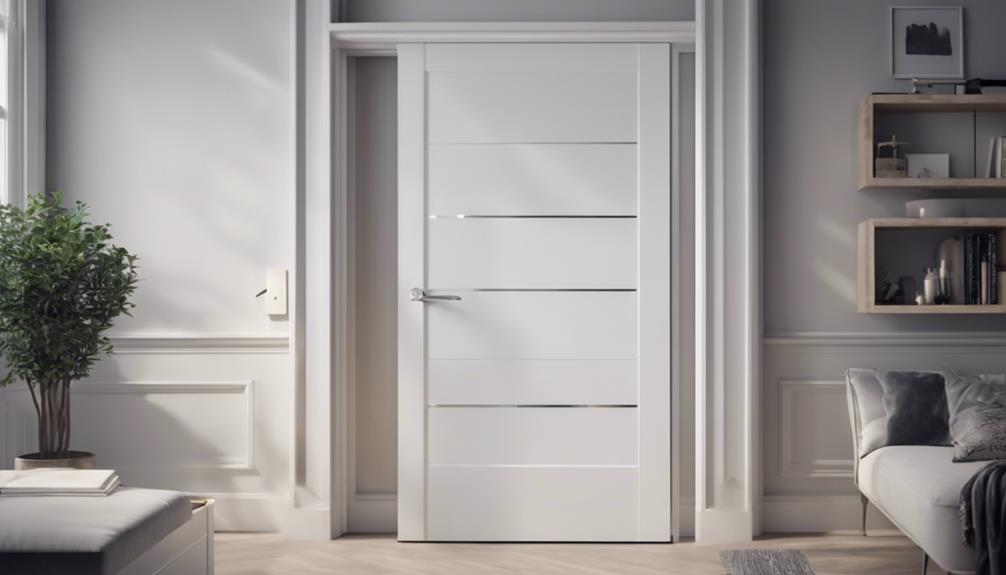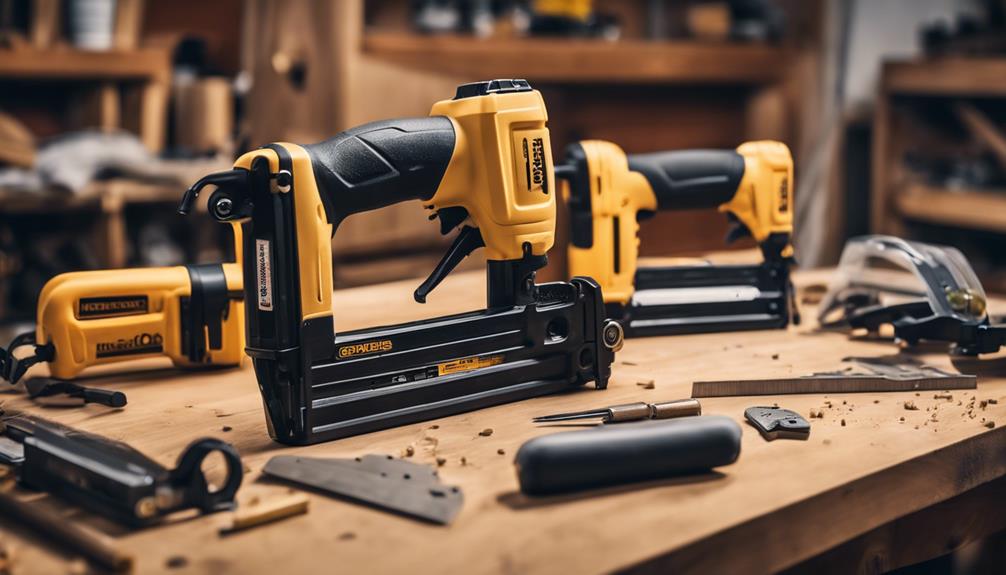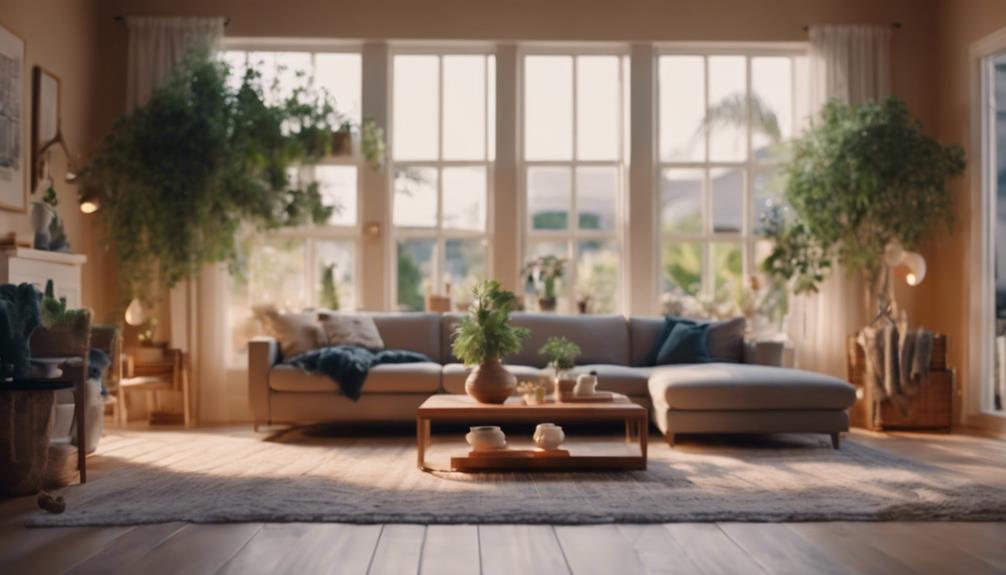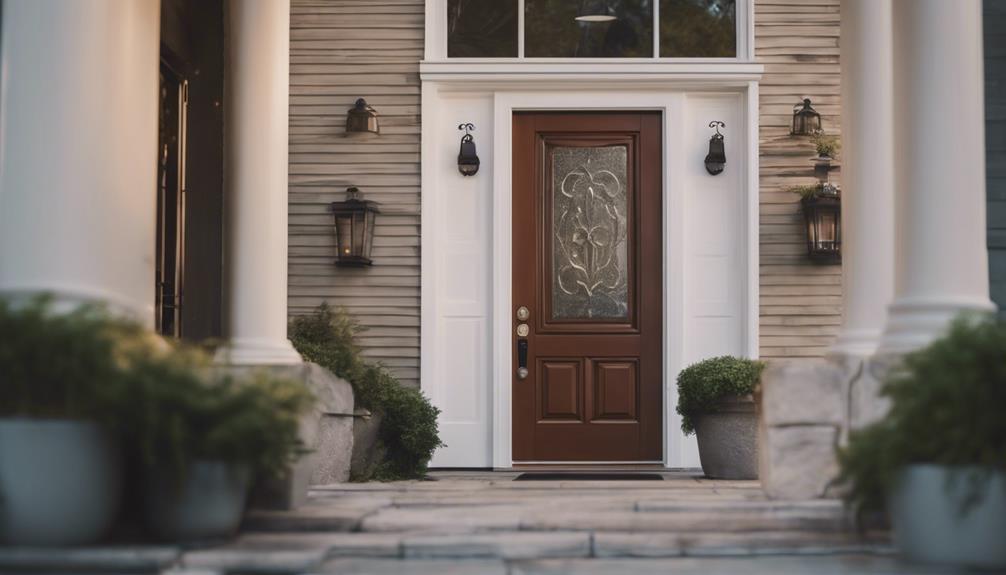B&Q does offer a fantastic interior door fitting service. They guarantee a precise fit for your home's doors. B&Q's professional installation service assures your interior doors are installed perfectly. Trust B&Q to expertly fit your interior doors for a seamless and stylish finish. Want to know more about how B&Q can help transform your living space with their interior door fittings? Keep discovering the benefits and details of their services to make your home improvement projects a breeze.
Key Takeaways
- B&Q provides interior door fittings for installation.
- Detailed instructions guide easy setup.
- Customer service offers installation assistance.
- Wide range of finishes and designs available.
- Enhance functionality and style with B&Q door components.
Measuring the Existing Door
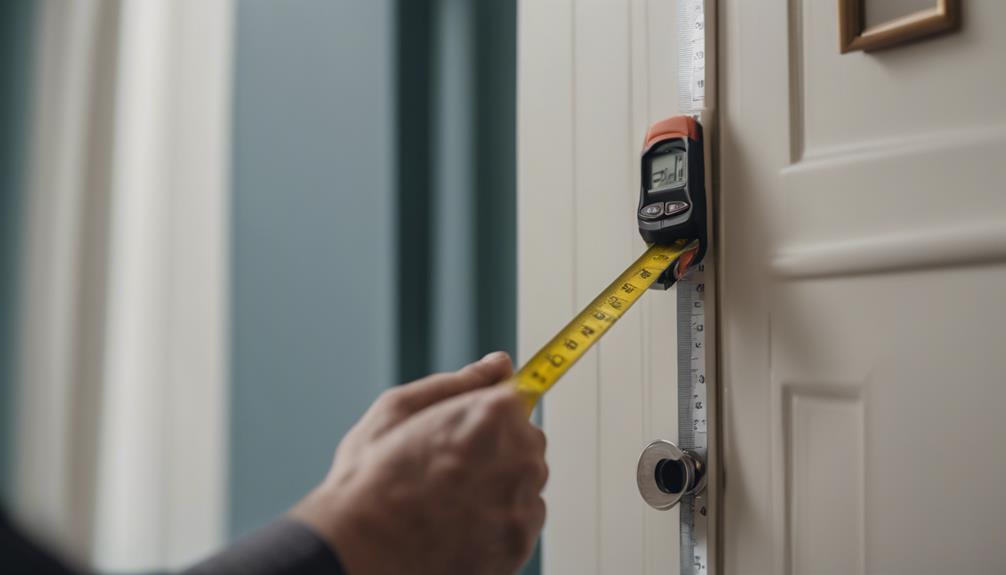
Measure the width of your existing door from edge to edge to determine the required size for a replacement door. Additionally, it's important to measure the height of the door from top to bottom for an accurate fit.
When measuring the door, don't forget to note the thickness as well. This information is essential in selecting a replacement door that matches the frame and hinge of your current setup.
Rounding up the measurements guarantees that the new interior door will fit correctly without any gaps or issues. Remember, it's best to use the largest measurements of width, height, and thickness to guarantee that the replacement door will be a perfect match.
Selecting the Right Door Size
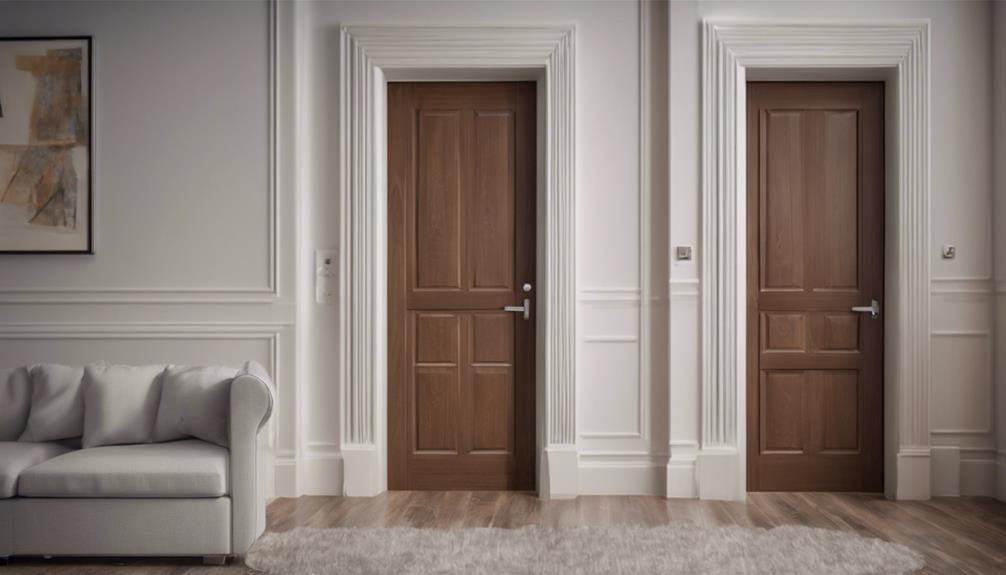
When selecting the appropriate door size, make sure to measure accurately for a perfect fit. Round up your measurements for a seamless adjustment within the frame.
Keep in mind the door's opening direction and swing for proper functionality.
Door Size Considerations
To guarantee a proper fit in the frame, make sure to round up your measurements when selecting a replacement door based on the width, height, and thickness of your existing door.
When considering a new door, accurate measurements are essential for a seamless installation process. If you lack an existing door, measuring the frame is vital to determine the required door size accurately. Remember to use the largest measurements from the frame or existing door to assure the correct fit.
Selecting the right door size is key for the installation process and proper functionality. By paying attention to these door size considerations and frame measurements, you can make sure your new door fits perfectly and functions as intended.
Measuring for Accuracy
To achieve a precise fit when selecting a new interior door, make sure your measurements accurately reflect the largest dimensions of the existing door or frame. Measure the width, height, and thickness of the existing door carefully to ensure an accurate fit.
If there's no existing door, measure the frame to determine the required door size. Round up your measurements when selecting a new door to guarantee it covers the largest dimensions effectively. Using the largest measurements taken will help you choose a door that fits the space perfectly.
Adjusting for Fit
To achieve a precise fit when selecting a new interior door, make sure your measurements accurately reflect the largest dimensions of the existing door or frame. When adjusting for fit, consider the following tips:
- Double-check all measurements before purchasing a new door to avoid sizing issues.
- Trim the bottom of the door if necessary for a proper fit within the frame.
- Secure the door in place with screws and a drill to guarantee stability and alignment.
Removing the Old Door
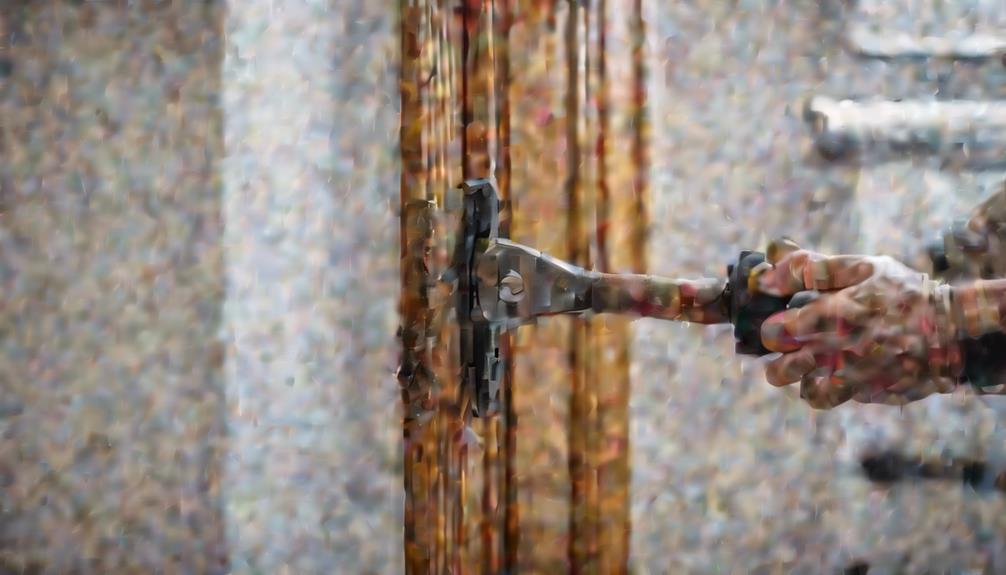
Start by carefully removing the trim surrounding the door frame to begin the process of removing the old door. This trim is usually attached with nails, so gently pry it off using a pry bar or a hammer. Once the trim is off, you can see the edges of the door frame. Next, locate the screws holding the frame to the studs. Unscrew these carefully, starting from the hinge side and working your way down to the bottom.
After the frame is detached, close the door and tip the frame to remove it from the opening. With the frame out of the way, it's time to take out the old door from the hinges. Make sure to measure the current door opening to guarantee the new door will fit properly. This step is essential for a seamless door replacement process.
With the old door removed and the frame taken out, you're now ready to move on to preparing the door frame for the new door installation.
Preparing the Door Frame
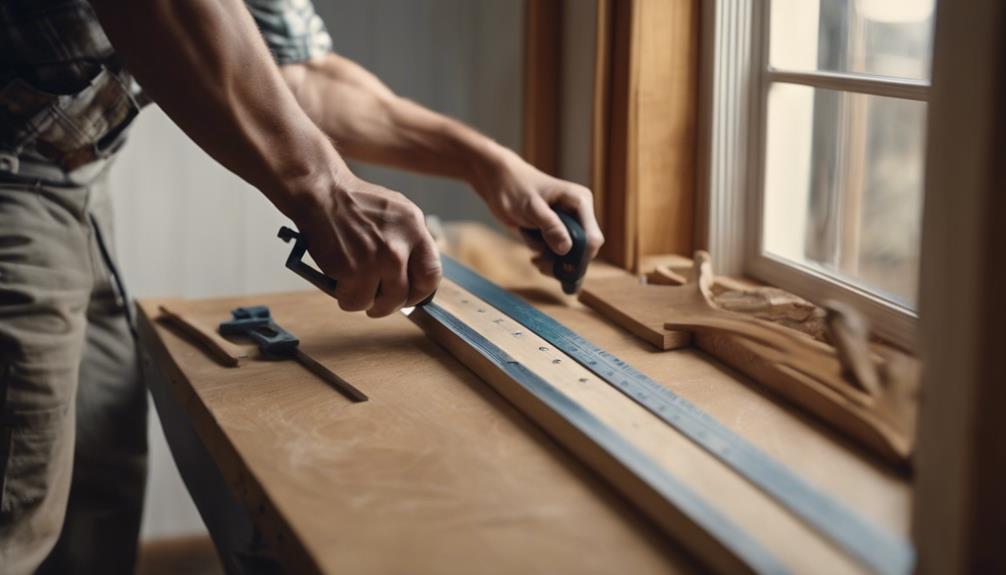
When preparing the door frame for fitting a new interior door, make sure that it's important and level. This is vital to guarantee that the door operates smoothly and fits properly within the frame.
Here are some key steps to keep in mind:
- Check the sides of the door: Verify that the sides of the door frame are straight and free from any obstructions that could impede the door's movement.
- Use shims: If there are any gaps between the door frame and the wall, use shims to adjust and align the frame correctly. This will help with the installation and stability of the door.
- Ensure the door frame is plumb: It's essential to make sure that the door frame is plumb, meaning it's vertically straight. This will prevent any issues with the door operation, such as sticking or difficulty in opening and closing.
Taking these steps will help you prepare the door frame effectively for the installation of a new interior door.
Installing the New Door
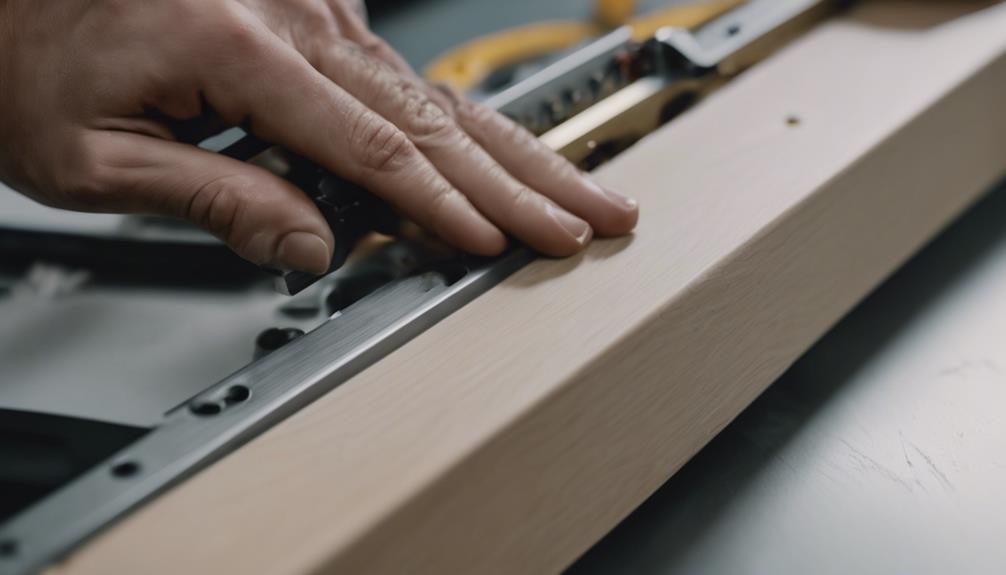
After confirming that the door frame is properly prepared, proceed with fitting the new interior door from B&Q by following these steps. First, make sure the door and frame match up correctly. Use shims to adjust the frame for a flush and level installation. Once the door is in place, secure it by using finishing nails to hold it firmly in place. Check the door for straightness and adjust the shims as needed to guarantee proper spacing all around.
Securing the door with finishing nails is essential to keep it stable and prevent any movement. Make sure to drive the nails in securely but be careful not to damage the door or frame. Once everything is securely in place, apply a sealer to protect the door from moisture and give it a polished finish. This step not only enhances the appearance of the door but also helps to prolong its lifespan.
Adjusting for Proper Fit
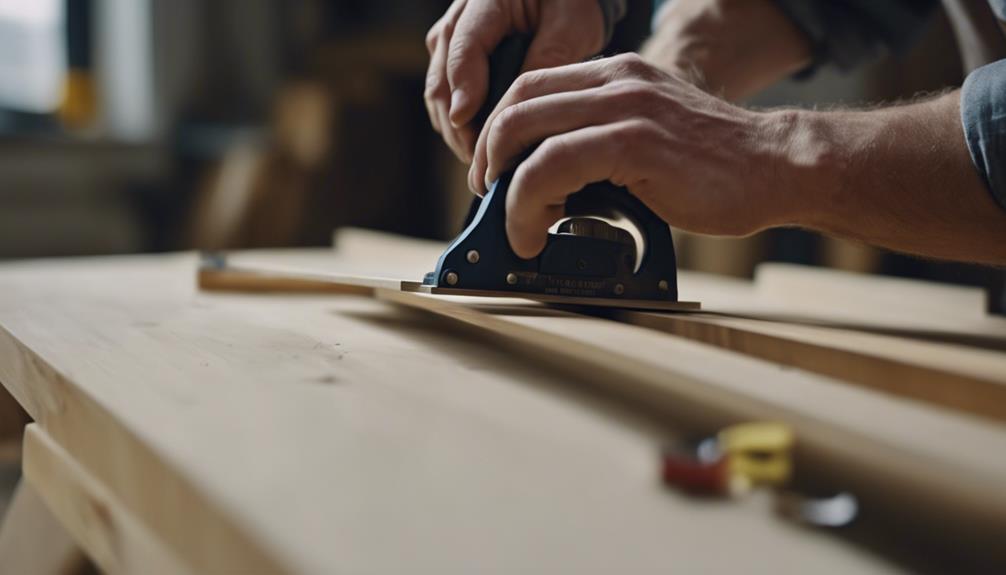
To achieve a proper fit for your B&Q interior door, consider adjusting the door frame and hinges as needed to guarantee alignment. Here are some tips to help you make the necessary adjustments:
- Measurements Matter: Before making any adjustments, make sure you take accurate measurements of the door and the frame to identify where changes are needed.
- Shimming for Alignment: Use shims to adjust the frame and hinges, filling any gaps to make certain the door fits snugly and opens smoothly.
- Hinge Recesses: If the hinges aren't aligning properly, you may need to adjust the hinge recesses using a drill bit to create a better fit.
Securing the Door in Place
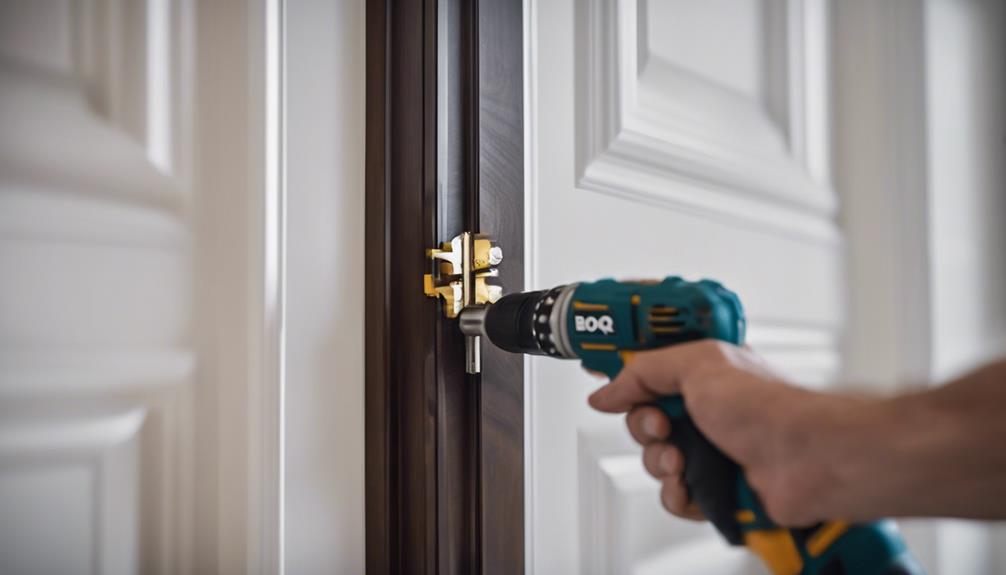
You can guarantee the stability of your B&Q interior door by using screws to secure the hinges on the door frame. Make sure the door is plumb and straight before finalizing its position.
Adjust shims as needed to create equal spacing around the door frame, ensuring a proper fit. To secure the frame in place, hammer finishing nails into the side jams.
For added strength and support, consider replacing the center hinge screws with longer screws. This will help prevent the door from sagging over time and ensure it stays securely in place.
Finishing Touches and Trim
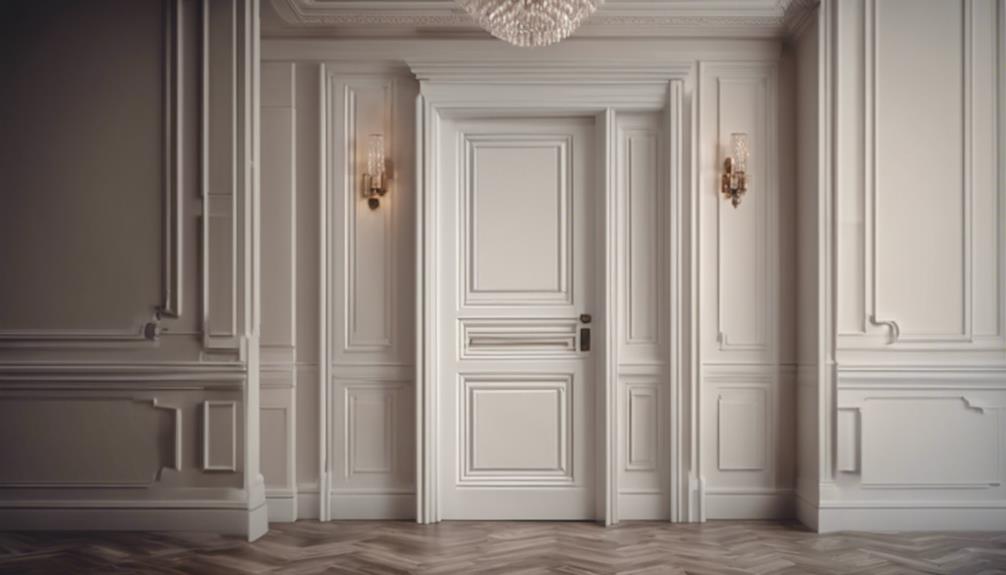
Once the B&Q interior door is securely in place and properly aligned, the next step involves applying trim-specific caulk to seamlessly fill any gaps around the door frame. This caulking process is vital for achieving a polished and professional look.
Additionally, sanding down nail heads flush with the frame and trim ensures a smooth surface for painting. Using a roller to apply paint evenly on the door frame and trim is key to achieving a clean and uniform appearance.
Remember to paint caulking seams with one medium coat to blend them in seamlessly with the surrounding surfaces. It's important to ensure a consistent coverage without visible brush strokes for that final touch of elegance.
Adding Hardware and Accessories
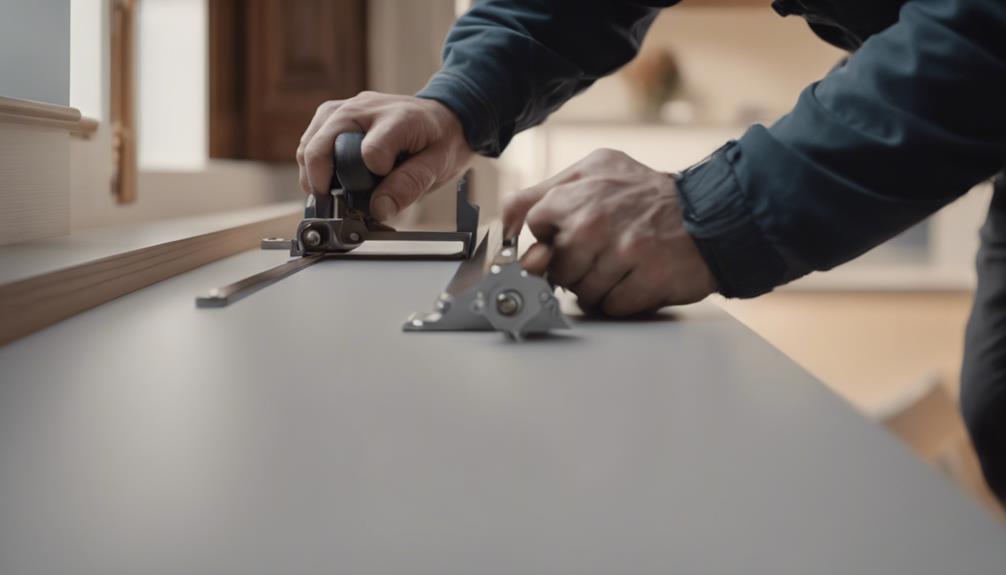
When fitting B&Q interior doors, consider selecting from a range of hardware and accessories, such as handles, locks, hinges, and latch units. These components not only enhance the functionality of your doors but also add a touch of style to your living space. B&Q offers a variety of finishes and designs for door handles, hinges, and latch units to complement your interior decor seamlessly.
To make your door installation a breeze, B&Q provides detailed instructions for adding hardware. However, bear in mind that adjustments or modifications may be necessary during the installation process to guarantee a perfect fit. If you encounter any challenges or have questions about the installation, don't hesitate to reach out to B&Q's customer service for assistance.
Consider the following table showcasing some of the key hardware and accessories available at B&Q:
| Hardware | Description |
|---|---|
| Door Handles | Various styles and finishes |
| Hinges | Different sizes and materials |
| Latch Units | Secure locking mechanisms |
| Installation | Detailed guides for easy setup |
Frequently Asked Questions
Will B and Q Cut Doors?
Yes, B&Q will cut doors to suit your needs. Their cutting service guarantees a perfect fit for interior doors in various sizes.
By requesting door trimming at B&Q, you can customize your door to match your required dimensions, saving time and effort in installation.
This convenient service allows you to tailor doors to your home projects, making it easy to achieve the look you desire.
Can B&Q Fit Doors?
When it comes to fitting interior doors, B&Q doesn't provide a fitting service. You're responsible for installing B&Q doors on your own. They offer detailed instructions and guidance for self-installation, making it a common DIY project.
If you find the installation process challenging, you may need to hire a professional installer. Take your time, follow the instructions, and you'll have your new door up in no time!
Can Internal Doors Be Cut to Size?
Yes, internal doors can be cut to size to fit specific doorways. It's important to measure accurately and utilize the right tools to guarantee a precise cut.
Cutting a door may impact its structure and appearance, so proceed with caution. If you're unsure about the process, it's best to seek professional help to avoid any potential damage or mistakes.
Can Anyone Fit an Internal Door?
You can definitely fit an internal door! With basic DIY skills, you can tackle tasks like hanging the door, installing hinges, and adding a handle. All you need are simple tools like a screwdriver, tape measure, and hammer.
Just follow step-by-step instructions and make sure to measure accurately. Whether you choose to DIY or hire a pro, B&Q offers a range of internal doors for you to pick from!
Conclusion
To sum up, fitting interior doors from B&Q is as easy as pie! Just follow the steps outlined in this guide, and you'll have your new door installed in no time.
It's like putting together a puzzle – once you have all the pieces in place, everything falls into place perfectly.
So roll up your sleeves, grab your tools, and get ready to transform your space with a brand new door from B&Q!
